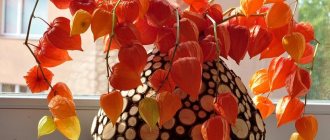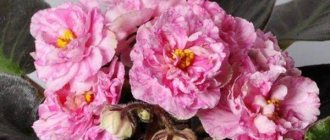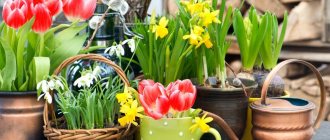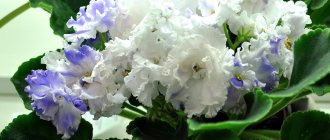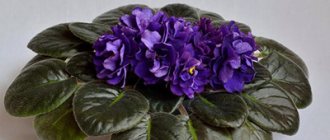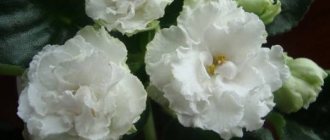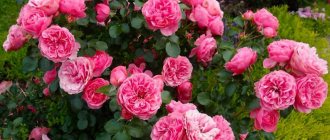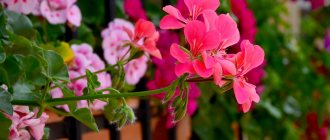Each of us tries to make our home more comfortable and cozy. Flowers add undeniable comfort to any apartment or house, and it is also useful, because indoor plants perform the function of purifying the air. Archaeological science, based on pollen found in caves, has proven that even in the Stone Age, people decorated their homes with flowers. Today, indoor floriculture is a separate science, and from all the variety of house plants, we present the most beautiful indoor flowers.
18 most beautiful types of indoor flowers:
1
Clivia
The beautiful evergreen plant is named after Duchess Charlotte Clive, who was governess to the future Queen Victoria of Great Britain.
This flower arrived in Europe from South Africa, easily took root in northern latitudes and became a favorite of most gardeners.
An unpretentious plant will decorate any home or office space, but you must try not to move the pot and water it once a week.
2
Crocuses
The harbingers of spring - crocuses are one of the first to bloom in the garden, but in a pot they are no less attractive and beautiful. On sale there are crocuses of various colors obtained by forcing. There is no woman who would not like the first harbingers of spring on her windowsill. There is no room where beautiful crocuses would not fit, especially if they grow in elegant pots. White crocuses in a pot
Crassula
The round leaves of this plant look like coins, which is why Crassula is often called “money tree” or “crassula” among gardeners.
When it blooms, it is covered with small white flowers, sometimes red, and very, very rarely the flowers can be blue.
One of the most unpretentious room dwellers. Even a leaf that falls to the ground can sprout into a separate plant.
3
Lithops
Photo credit: Dornenwolf / flicr
Translated from ancient Greek, the name of the plant translates as “stone appearance,” perhaps because it comes from the rocky and sandy deserts of Namibia and Botswana.
That is why Lithops has learned to retain moisture and easily tolerate heat and arid climates.
The flowers of the desert dweller who migrated to apartments are white or yellow; very rarely there are varieties with orange petals.
4
Echeveria
This succulent can often be found at flower shows because the unusual shape of the “stone flower” really has aesthetic value. Echeveria has become a star on Instagram and Pinterest in recent years, and interest in it is only growing. The plant is easy to care for, however, it does not tolerate low temperatures, so you should not leave a pot of echeveria on the balcony in winter.
Croton
This species, growing in tropical and subtropical zones, has long become popular among flower growers around the world.
Its bright leaves will add variety and uniqueness to your home, or will become a real decoration for your office. Due to its shape it has become very popular among amateur gardeners.
The plant is easy to care for, and some of its species grow up to 80 centimeters in height.
5
Bromeliad
They named the indoor flower and the entire genus in honor of the Swedish biologist Bromelius. This tropical beauty is a distant relative of the pineapple.
Their leaves are lancet-shaped, they are collected in a kind of rosette from which the peduncle grows. Bromeliads require watering only once a week, but bromeliads should be placed in places that receive sunlight.
Flowering lasts from 3 weeks to several months, delighting the owners and guests of the house.
6
Geranium
This beautiful indoor plant also has bactericidal properties, so it will not only decorate the room, but will also be useful.
In order for geraniums to bloom constantly, it is necessary to pick off the already fading flowers.
The plant is unpretentious and does not require spraying or frequent watering. Because of its beauty and originality, geranium is one of the most popular inhabitants of apartments and offices.
7
tangerine tree
The tangerine tree in indoor cultivation not only looks fascinating, but also has a persistent and pleasant citrus aroma. Such beauty must be carefully looked after - the tangerine tree needs weekly spraying of the leaves. With good care and sunlight, the tree can grow to a very impressive size. It is worth noting that the plant has exclusively decorative value - eating fruits grown in artificial conditions is not recommended - they have a bitter-sour unpleasant taste.
Alocasia
The exotic queen of the tropics has just begun to win the hearts of sophisticated flower growers. Unusual, original shaped alocasia leaves will decorate any room.
In addition, it is unpretentious and does not require special care. Interestingly, different species have different numbers of leaves, but during flowering many plants have only one leaf.
In nature, some species grow up to 2 meters in height, but domestic relatives are from 20 to 40 centimeters.
8
Decorative foliage
Non-flowering or without spectacular blooming with an interesting cover belong to this class; They are divided into climbing, upright, shrubs, palms, and trees.
Tradescantia is a wonderful decoration for vertical decoration of walls, doors and winter gardens. It is especially unpretentious, has simple agricultural technology and rooting, and is moisture-loving. A real find for design.
Poinsettia belongs to the subgroup of upright-growing leafy plants. It is otherwise called the “Christmas Star” because of the peculiarity of its bracts. Suffering from short duration of existence.
Croton is also classified as a deciduous plant. Belongs to the genus Euphorbiaceae and is afraid of sudden changes in temperature. Codiaum can be up to a meter high, and the garden variety can be up to three meters high.
Begonia Bauer. Peduncles are cut to achieve a wide rootstock at the base - take a voluminous tub. Requires frequent replanting due to personal characteristics.
Shrubs (ferns) are suitable for making compositions. These include: Platicerium, Kostenets, Orlyak, Nephrolepis, Adiantum. Accused of vampirism, they breed laziness and apathy.
Palms and dendroids. Superstitious gardeners believe that their lush tops improve wealth, but rarely does anyone manage to breed them. Dendritic ones do not recommend cluttering them with anything; they are meticulous about irradiation.
Dracaena, accustomed to living naturally “like a Spartan,” is classified as dentritic, is not picky about large spaces and reproduces easily.
Pockmarked large-leaf outdoor Dieffenbachias most often fade in the shade. In addition to mysticism, it is poisonous, it takes away health and strength.
The famous Yucca prefers minimal moisture and infrequent feeding.
The hardy decorative-leaved Monstera, called the crybaby, stretches up to 4 m. Monstera juice relieves migraines. Will cope with the lack of moisture. She enjoys decorating the decorations.
Ficus plants require special care and are rich in variety, differing in color and appearance. They also have ground-blooded and ampelous specimens. They are often used as decor for gazebos and homes.
Spathiphyllum
According to legend, this beautiful home flower helps girls meet their betrothed and find feminine happiness.
But with such abilities, it requires special attention to itself, and one cannot say that these are unpretentious indoor flowers. It does not like drafts, but it is better to water it using the cycle method with settled water.
During its flowering period it requires more moisture, but the sun is not so important for it, so it can also grow on windows facing north.
9
How to care for the flower of happiness?
Some of the most frequently purchased flowers are Spathiphyllum and Anthurium . People call them female and male happiness.
Spathiphyllum grows in nature along rivers. Create a humid and cool climate for it. The temperature should not exceed 22 degrees Celsius.
The flower does not tolerate sun or strong shade. The eastern or western side is optimal for it.
Rules of care:
- Spray 3-4 times a day.
- Water with settled, non-chlorinated water at room temperature.
- Feed with special fertilizers. In summer every 2 weeks, in winter every 3-4 weeks.
For the anthurium , choose any place; it does not have to be placed on the windowsill. He will like even the high temperature in our apartments in winter. But at the same time it is necessary to create sufficient humidity for the plant.
Rules of care:
- Spray only the leaves twice a day. No moisture should get on the inflorescence.
- Water once every 4 days exclusively with settled water.
- Once a month, fertilize the anthurium with organic, mineral or complex compounds.
Indoor rose
What could be more beautiful than a rose, especially when it blooms on your windowsill. But this queen of flowers requires special care.
The home rose simply loves sunny color, so it is better to place it in a well-lit place on a western or eastern window.
If you care for them properly, roses will bloom all year round, every 7-8 weeks.
10
Flower care cheat sheet
The main thing is to provide the flowers with the proper microclimate.
Find out the most complete information about your plant:
- where to put it;
- how often to water and spray;
- when and what to feed.
Cut plants will last longer if they change the water daily, trim the stems and feed them with a mixture for bouquets, which are sold in every flower shop.
Follow the rules of care, and then the flowers will delight you for many years.
Do your indoor flowers survive? What products do you use to extend the life of your bouquet? Write in the comments about your knowledge and experience. Repost so you don’t lose the article and read it over the weekend.
This training may be right for you:
- 10 Best Online Floristry Training Courses
- Best Floristry Courses in Moscow from 1,300 Rubles
- Best Floristry Courses in St. Petersburg
Fuchsia
Once upon a time, flowering indoor plants accepted fuchsia, a native of Australia and Latin America, into their family. And what is noteworthy is that she immediately took a leading position in home floriculture.
This flower was also revered by the American Indians, and the Incas considered it sacred and decorated their homes and places of worship with flowers.
Fuchsia is unpretentious, and the only thing it really loves is the diffused sunny color. On the pages of the website most-beauty.ru we wrote about this plant in an article about the most beautiful flowers in the world.
11
Plants in the house. TOP 7 expert tips
When creating home comfort, it is important not to disturb its melody. Living plants help the interior “sound” more alive and aesthetically. My tips will help you turn an ordinary apartment into a real fairy tale.
Turn an ordinary apartment into a real fairy tale
1 Don't overload the space. Observe the parameters of the plants and the dimensions of the room. Pay attention to the expressiveness of the shapes and color of the leaves.
2 Don't hide beauty behind curtains. Place plants in plain sight on racks and shelves, in hanging planters or on the floor.
Let everyone around you see your plants
3 Consider compatibility. Remember that tropical and exotic plants cannot form a harmonious ensemble with flowers from the last century.
Plants should be in harmony with each other
4 Focus on greenery. Containers for growing plants should not be bright or colorful. Choose neutral or plain-colored containers. It matches any interior style.
Choose neutral flower pots
5 Zone the room. Try designing ecological zones with a wall of green vines, ivy, ferns or tall plants in tubs.
Create an eco-green corner in your home
6 Look for hidden reserves. Insulate the balcony and arrange a miniature winter garden on it. Use free walls, stairs and the most secluded corners to grow indoor flowers.
Miniature winter garden on the balcony
7 Enhance the impression. If possible, place flower arrangements in front of mirrors. Play them up with soft background lighting.
Indoor plants in front of mirrors
Grow plants as simple as possible. A person does not have much time to care for flowers; it is better to choose “patient” crops. Succulents and other tropical inhabitants look good even with little care.
Hibiscus
But this is not really a flower, but a shrub that came to the Old World from the hot tropics. Evergreen hibiscus, blooming from early spring to late autumn, will decorate the room.
It should be kept in the southern part of the house, where there is a lot of light, and watered regularly and preferably with settled, not cool water.
The only thing that this most beautiful of shrubs cannot tolerate is sudden temperature changes and drafts.
12
Ivy
Although, according to legend, you can’t keep curly ones at home, as they bring misfortune and neutralize human energy.
It is even said that it scares away men and destroys families; but how charming is this hanging decoration of any interior. From the class Araliaceae; fast-growing Hedera is considered one of the best ionizers.
Hippeastrum
Often this representative of indoor fauna is mistakenly called Amaryllis; in Greek it is a combination of two words “horseman” and “star”.
A flower with a romantic name loves bright light and is very thermophilic. This is not surprising, because he arrived in Europe and America from the warm latitudes of South Africa.
When flowering, it produces magnificent bright red or pink corolla-shaped flowers.
13
Chlorophytum
Perennial Chlorophytum - solo to cleanse the environment, easy to propagate. Daughter rosettes and shoots are formed on the pointed-lanceolate green leaf blades. Watering should be done every other day.
Even a beginner can handle Chlorophytum; It is recommended to put it on the light side for dynamic reproduction. It is propagated through rosettes or by dividing the bush.
It is advisable to replant and bathe in the shower at least occasionally. Small stars appear at the tips of elongated branches.
Hyacinth
This house flower, a member of the large Asparagus family, can bloom in a variety of shades from bright red to white and purple.
Recently, due to its original shape and beauty, it has become a fairly common species among gardeners. In addition to the house, there are species that get along well in the garden.
Hyacinth flowers are widely used in the perfume industry, and during the flowering period, hyacinth itself has a pleasant aroma.
14
cacti
Be that as it may, but a prickly flower during the flowering period, even if this happens very rarely, you simply cannot take your eyes off them.
And it can please you with flowering only with proper care and compliance with watering requirements. Everyone probably knows that cacti are not watered in winter.
This is a heat-loving plant, so it loves bright light and prefers to be in the southern part of the house.
How to care for gerberas
Cut gerberas last from 7 to 14 days with proper care.
First, distribute the bouquet. Be careful, the flowers have fragile and thin stems. Their tips should not touch the bottom of the vase.
Cut the stem along an oblique line with a sharp knife, this will increase the supply of moisture to the plant. The water in the vase should cover the stems by 4 cm. When it evaporates, it is necessary to add liquid.
Clean and trim the stems every 3 days. To do this, rinse the ends of mucus under running water.
To disinfect, add a few granules of citric acid or an activated carbon tablet to the water.
Begonia
Graceful and majestic begonia has long won the hearts and souls of flower growers and lovers of beauty. It is noteworthy that leaves and flowers can take on a variety of, and sometimes quite bizarre, shapes.
Loves sunny color and regular watering. With proper care, it will delight you with the blooming of beautiful colorful flowers.
This genus is the most common and numerous in the large Begonieceae family, and somewhere in space there is an asteroid named after this flower.
16
Poinsettia
The first Spaniards who arrived in South America met a beautiful flower in the tropics, and local ethnic groups spoke about its healing and magical properties.
The second name simply screams about the magnificence of the plant - the most beautiful Euphorbia, and today it is widespread as an indoor flower in every corner of the world. For a long time there was a misconception that the plant is poisonous, but this is not so. It is harmless and even useful, ionizing the air in the room where it grows.
17
Schlumberger
A flower with such an unusual name belongs to the cactus family, but among gardeners there are many names: “Decembrist”, “Christmas cactus” or simply “Christmas cactus”.
When it blooms, it usually blooms very luxuriantly and for a long period of time. It is better to place it in bright places, but without direct sunlight. Like all cacti, it requires moderate watering, but during the flowering period it is necessary to water it abundantly and maintain high air humidity.
18
Description
The entire diverse world of domestic plants is usually divided into four main groups. This division allows even beginners to determine their preferences and wishes, since, not least of all, it pays attention to the appearance of the plants.
A group of decorative leafy indoor plants pleases with their appearance all year round. Their main decorative value lies precisely in the leaves, a beautifully decorated, spectacular green mass, and not in the flowers. Some varieties prefer a period of rest, when a decrease in air temperature and a reduction in watering and fertilizing are needed. Plants of this group live for many years, if, of course, they are provided with comfortable conditions and appropriate care.
The group of decorative flowering indoor plants is famous primarily for its flowers, but even in the periods between flowering, most of them look quite decorative. Although this group includes many more domestic flowers that require a period of rest. Some are usually moved to a cooler room, while others are planted in open ground for healing. These plants also live a long time and do not shed their leaves at all between flowering seasons.
A group of decorative flowering potted plants retains their decorative effect only for a short flowering period, after which the plants shed their foliage. They are usually used for flowering at a certain time, for which they are specially forced to a certain date. After flowering, they are often simply thrown away, but you can save the tubers and bulbs in appropriate conditions until the next flowering period.
A special fourth group consists of cacti. They always have many fans due to their endurance, unpretentiousness, long life and constant decorative effect. There are cacti with spines, hairs, even leaves, with one or more stems, they are diverse.
Taking into account external differences, the types of indoor flowers were divided into six groups. Poaceae, as the name suggests, are similar to cereals. They have long narrow (or not very narrow, like Chlorophytum) leaves, often collected in a bunch. These are the following plants: Calamus, Arundinaria, Sedge, Ophiopogon, Bilbergia, Chlorophytum, Wallota, Narcissus and others.
Jokers say that all the plants that they didn’t know where to identify were included in the bushy group, because they can be small, compact and large, spreading. Be that as it may, plants in this group have several stems growing from the soil, and they can grow vertically upward or deviate at different angles. For example, like the plants Peperomia, Aucuba, Achimenes, Begonia, Hypocyrta, Coleus, Maranta.
Plants with an erect stem may differ in height, thickness, character, but they have one common feature - one straight stem (or trunk). This group includes:
- columnar plants (Cleistocactus Strauss, Notocactus Leninghaus, Cereus Peruvian);
- trees (Aphelandra, Laurel, Ficus, Codiaum, Citrus, Schefflera);
- false palms (Beaucarney, Dieffenbachia, Dracaena, Pandanus, Yucca).
Lianas and hanging plants climb, grow, crawl, and hang down. They usually grow in all directions; to give the plant the desired shape, sticks of different lengths, wire, ribbons, cords, and trellises are used. Popular vines: Dipladenia, Passiflora, Stephanotis, Philodendron. The most famous climbing plants are: Ivy, Scindapsus. Of the ampelous ones - Fittonia, Sedum, Nertera, Bellflower, Zygocactus and others.
Rosette plants develop in such a way that their leaves seem to be collected in a rosette. They are usually small in size. Highlight:
- flat rosette plants (Gloxinia, Primula, Saintpaulia);
- succulent rosettes (Haworthia striped, Aeonium storiosa, Roofing succulent);
- funnel-shaped rosettes (Vresia, Guzmania, Nidularium).
Globular plants usually do not have leaves in the usual sense; they have a spherical, flat or ribbed trunk. The trunk may be covered with thorns or hairs, many of which are cacti. Examples of these plants: Echinocactus Grusona, Ferocactus, Parody, Mammillaria, Astrophytum.
Primrose
Let’s complete the review with a representative of the Primrose family, the most beautiful and original flower, Primrose. The name in Latin is exactly that - “first”.
Whole, carved leaves form a basal rosette. But the primrose blooms with multi-colored flowers of bizarre shapes and an incredible aroma.
It is best to place primroses in brightly lit places, but without direct sunlight, in the southern part of the apartment or house.
Graptopetalum
There has been a “trend” for succulents in plant growing for a long time, and, apparently, it will last for a long time. Graptopetalum itself looks very aesthetically pleasing, and its flowering is a completely different, mesmerizing beauty. This plant loves direct sunlight, and, subject to very poor indoor lighting, it is necessary to use a special phytolamp (if you want to speed up the flowering of the succulent).

